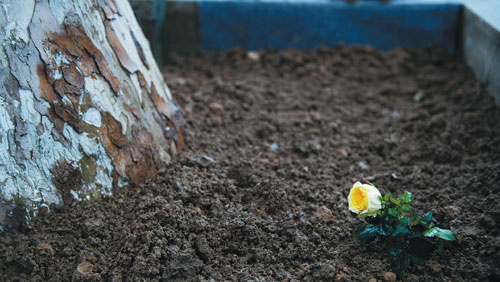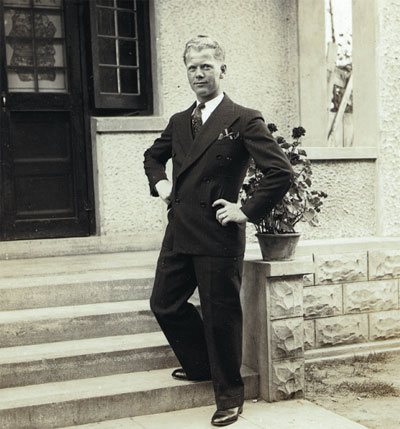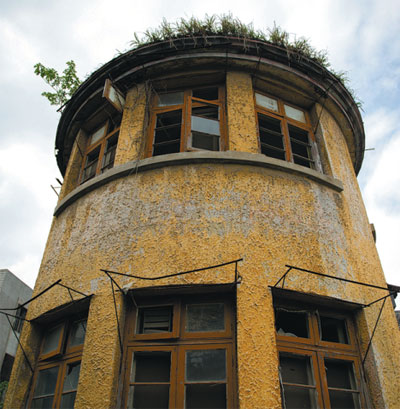Remembering 'nanjing's schindler'
Updated: 2015-09-01 07:45
By Wang Xin and Cang Wei(China Daily)
|
|||||||||||
As China celebrates the 70th anniversary of victory over Japan, tributes are being paid to an idealistic young foreigner who helped to save 20,000 people in the face of one of the worst atrocities committed during eight years of brutal occupation. Wang Xin and Cang Wei report from Nanjing.
Without a silver dollar and some rice donated by a young Danish national, Su Guobao and his family wouldn't have survived the winter of 1937.
Although the weather was bitterly cold, the climate was the least of people's worries. The Japanese captured Nanjing, the capital of Jiangsu province, on Dec 13 and immediately embarked on a six-week massacre in which 300,000 soldiers and civilians were slaughtered and thousands of women were raped, according to Chinese historical documents.
Cement stronghold
Su, who was 10 at the time, lived in Hushan, a village in Tangshan township. He and three members of his family fled to a makeshift refugee camp at the Jiangnan Cement Factory in the Qixia district of the city. How-ever, only three of them made it to the camp because Su's younger brother was killed by Japanese soldiers as the family made its way across town.
"Mr Sindberg asked me to work at the cement factory. He gave me a silver dollar and 9 kilograms of rice and said he would send me to school. I just wanted to survive, and I refused his offer (of education) because it never occurred to me that one day I could go to school. I'll always be grateful to him and his colleagues," said Su, who is now 88.
In 107 days straddling 1937 and 1938, Bernhard Arp Sindberg, a 26-year-old Danish laborer, and his colleagues saved about 20,000 Chinese people from the Japanese troops rampaging through the city.
When he first arrived in China, Sindberg worked as a receptionist at the Cathay Hotel in Shanghai, but was fired because of his foul temper. The same thing happened when he worked for a Danish-owned milk producer. However, Sindberg managed to secure a job with Nielsen & Winther, a Danish armaments and aircraft manufacturer, demonstrating the company's weapons to the Nationalist government in Nanjing, which was China's wartime capital until the final months of 1937. Later, he worked as a driver and assistant for a foreign war correspondent who was killed by the Japanese in November 1937.
After attending the correspondent's funeral, Sindberg moved to Nanjing and secured a job as watchman at the Jiangnan Cement Factory - China's biggest cement facility, which used modern techniques and equipment imported from Denmark and Germany - where he was tasked with protecting equipment owned by F.L. Smidth, a Danish engineering company.
According to Dai Yuanzhi, a former journalist who has spent more than 10 years researching the history of the cement factory refugee camp, Sindberg, a German colleague called Karl Gunther and other expatriate workers established the camp in December 1937.
"They not only helped civilians, but also rescued injured Chinese soldiers," Dai said. "To prevent Japanese soldiers from entering the camp, they surrounded the factory with the Danish and German national flags."
As a further safety measure, a sign was hung on the factory's front door that read "Danish-German Joint Venture, Jiangnan Cement Factory", and a giant Danish flag, of about 1,350 square meters, was painted on the roof.
Cramped conditions
In his book, 1937-1938 and the Atrocities of Humanity, Dai describes conditions in the camp: "Huge crowds of people stood or sat next to each other. The sheds were very close; there wasn't even space for toilets."
Xia Quanliang and Su Guobao, two survivors from Hushan village, told Dai, "Our lives were worse than those of oxen and horses."
Sindberg was also quoted as saying: "Only God knows how those poor people suffered."
The Danish watchman and his colleagues established a hospital inside the factory to treat the sick and injured, although seriously ill people were sent to downtown Nanjing to receive treatment. Sinberg begged the Drum Tower Hospital and the Red Cross to provide nurses, medicine and bandages.
He also provided food and information for those who became isolated in the downtown International Safety Zone. Because it was located in a remote area of the city, the factory had a generator, which allowed residents to listen to radio reports about the progress of the war. In addition to saving lives, Sindberg also wrote a journal recording local events and took photos of the atrocities committed by the Japanese.
"Sindberg and a US priest, John Magee, who was president of the Nanjing Committee of the International Red Cross, photographed the disgusting acts committed by Japanese troops around the cement factory and the nearby Qixia Temple," said Jing Shenghong, a historian at Nanjing Normal University who specializes in studies of the massacre.
"He wrote letters to friends in his hometown of Aarhus, Denmark, describing the massacre in detail," he added.
On Feb 2, 1938, Sindberg handed his records of the massacre to John Rabe, the-then president of the Nanjing Safety Zone, and Lewis Smythe, secretary of the zone's international committee.
After being deported by the Japanese in March 1938, Sindberg traveled to Europe where he toured Denmark and Germany with an exhibition of his writings and photos as a way of alerting the world to Japan's brutal incursion into China.
In 1939, Sindberg left Denmark for good and headed to the US, where he lived until his death in 1983.
According to his niece, Marianne Andersen, Sindberg rarely mentioned his experiences in wartime China, and only opened up when he'd had too much to drink. "He never told me about his experiences of saving people from the massacre," Andersen said. "I think it remained a traumatic episode all his life. When you experience extremely horrible things, it's hard to speak about them."
Andersen, a keen gardener, bred a special yellow rose and named it the "Nanjing Forever - Sindberg Rose" after her late uncle. Dai sent her an e-mail in which he praised the flower, saying that yellow is the most exalted and honored color in China.
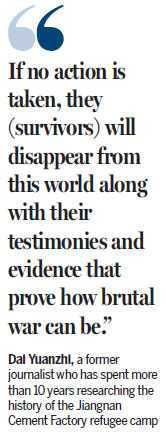
In April last year, when Denmark's Queen Margrethe II visited the Nanjing Massacre Memorial Hall, she praised the yellow roses on display in the Peace Hall. At the same event, Andersen, who was among the Danish invitees, met with Su to remember the victims of the massacre.
"Sindberg would have been an adventurous sailor without those 107 days at the cement factory," said Wu Xianbin, curator of the Nanjing Folk Anti-Japanese War Museum. "His heroic behavior meant he was regarded as a god by the people he helped to save."
To honor Sindberg's bravery, the local people sent a silk banner, 98 centimeters long and 36 centimeters wide, to their "savior", as they called him. Andersen donated the banner, which bears the words "The Good Samaritan" and was signed by 11 people, to the memorial hall in 2006.
Commemorative events
The Nanjing authorities and the researchers have maintained strong relationships with Sindberg's relatives, and they have hosted commemorative events, including exhibitions and forums, in China and Denmark.
On Feb 16, 2011, a forum was held in Nanjing to commemorate the 100th anniversary of the birth of the man known as "Nanjing's Schindler".
Despite the recent acclaim, Dai believes that greater efforts are required to help the camp's former refugees and to protect the factory infrastructure.
"Many of the survivors are in their 80s and older," he said. "If no action is taken, they will disappear from this world along with their testimonies and evidence that prove how brutal war can be."
The factory buildings are also in poor condition. There are holes in many of the ceilings, most of the window frames are missing and the walls are cracked and tumbling down. Gunther's former residence was badly damaged in a fire and has yet to be fully restored.
"Those old buildings witnessed the massacre and they should be protected," Dai said.
Contact the writers at cangwei@chinadaily.com.cn
|
A special yellow rose that was planted by Denmark's Queen Margrethe II at the peace tree in Nanjing last year. The rose is named the "Nanjing Forever - Sindberg Rose" after Bernhard Arp Sindberg, a Danish national who saved 20,000 people during the Nanjing Massacre of 1937-38. Li Xiang / Xinhua |
|
Bernhard Arp Sindberg established a refugee camp in 1937 with German Karl Gunther and other expatriate workers. Provided to China Daily |
|
A photograph taken last year showing the former site of the Jiangnan Cement Factory where Sindberg worked and sheltered thousands of Chinese soldiers and civilians during the Japanese occupation. Li Xiang / Xinhua |
(China Daily 09/01/2015 page6)
Today's Top News
Chinese athletes win 9 medals at Beijing world championships
Houston physicist invited to view V-Day parade in Beijing
Journalist, securities regulatory official held for stock market violation
German version of The Three-Body Problem may come out next fall
Hundreds die as desperate migrants head for Europe
Why China will have a 'soft' landing
All creatures great and small help keep V-Day parade safe
Class: Worlds apart, but
learning together
Hot Topics
Lunar probe , China growth forecasts, Emission rules get tougher, China seen through 'colored lens', International board,
Editor's Picks

|

|

|
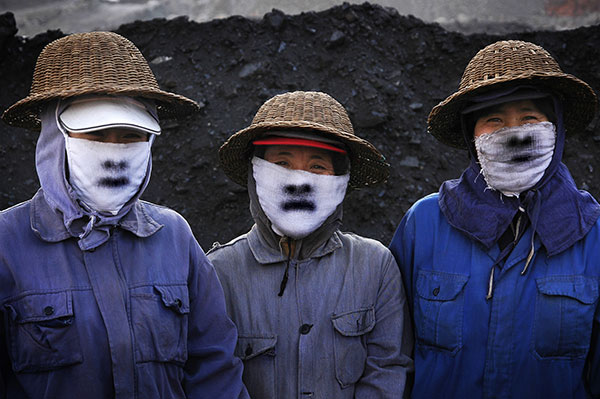
|

|
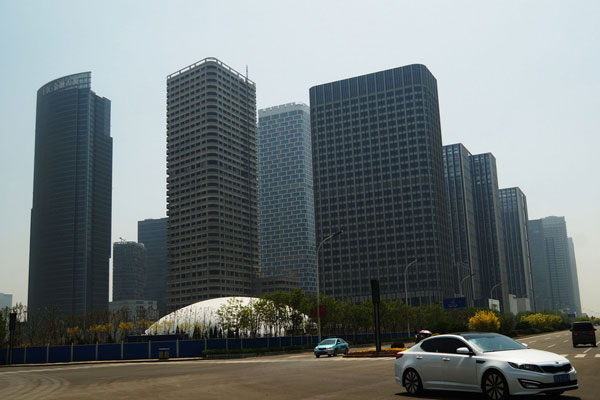
|
